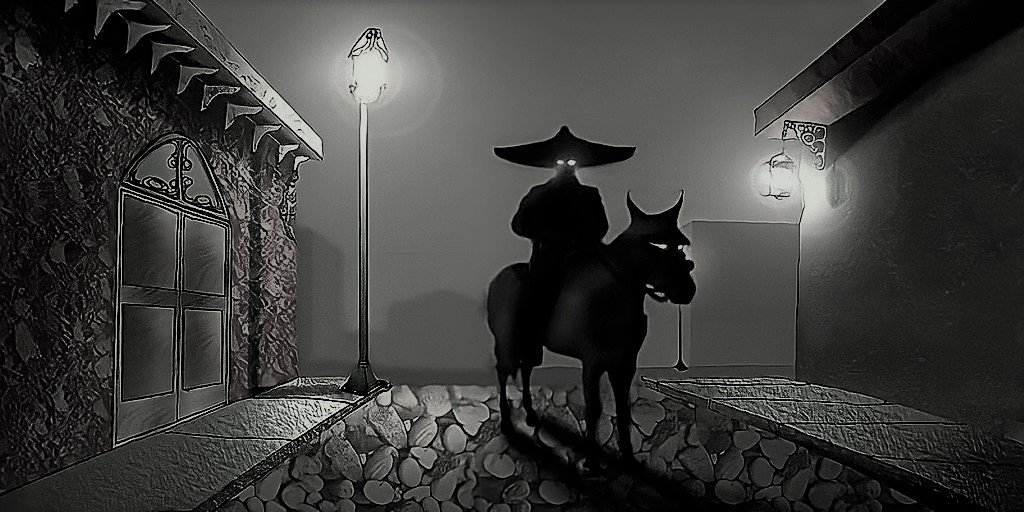The Panic of Halley’s Comet in 1910
Today there are still things we don’t know about the wonders of space and everything that hangs out there. Now imagine it’s the early 20th century and someone says a comet will wipe out all life on the planet… a lot of people are going to believe it.
And history has taught us that when a lot of people believe something dangerous is coming, there’s going to be some irrational panic.
“Guys, is that a comet or a sign of the end times?”
What’s A Comet?
Comets are a mixture of ice, cosmic dust, and solidified gasses that can be found in space minding their own business as they fly by planets, the sun, and the solar system. As the comet gets closer to the sun, the gases evaporate, creating a tail-like appearance.
These gases reflect light and emit a glow that gives the comet a bright appearance. Obviously, that’s a very simplistic explanation of a comet but our tagline is “learn a little bit of everything” not “Get Your Ph.D. Research Here”.
For a large portion of history, many astronomers and scientists believed that comets were just a space phenomenon that happened randomly, there was no rhyme or reason to it. But for most of history, there wasn’t television or the internet so people got bored often and researched a lot.
“Discovering” Halley’s Comet
Enter Edmund Hailley born in 1656 and became an astronomer, mathematician, and physicist because, again, people got bored often or maybe school was easier back then?
“School also didn’t put us in debt for 10+ years.”
In 1682 a comet was visible with the naked eye passing by Earth which caught Halley’s attention. He began studying the comet and by applying his good friend, Isaac Newton’s, research on physics and gravity, he realized that a comet documented in 1531 and 1607 was the same as the one in 1682.
Halley figured out that the comet was orbiting around the sun and calculated that its orbit would always bring it near Earth every 76 years. Believing he was right, Halley calculated the next time the comet would be visible to those on Earth would be in 1758.
Since the comet is today called “Halley’s Comet” it turns out he was right although, he was slightly off since the comet was only visible in 1758 with a telescope. It wouldn’t enter its perihelion or the point in its orbit where it’s closest Earth, until March 1759. Although Newton and Halley had suggested this might happen due to Jupiter and Saturn’s gravitational pull on the comet.
But Halley never got to see the confirmation of his calculations since he died in 1742. French astronomer Nicolas-Louis de Lacaille honored Halley by naming the comet after him in 1759. Today we know that the orbit of Halley’s comet can vary between 74 and 79 years and we also know that the comet is harmless to those on the planet, something that in 1910 was very much in doubt by a lot of people.
Camille Flammarion’s Prediction
In September 1908 Comet Morehouse passed by Earth giving scientists the opportunity to study the spectra of the gases in its tail and while that sounds dirty, I promise it’s not. Since no one could fly up to the comet as it was still 1908, scientists used spectroscopy which allowed them to study the light that was emitted by the gases.
Every gas produces its own pattern of light called spectra and scientists can identify that gas by looking at the spectra. Again, it’s a simplistic explanation but, if it helps, think of the spectra as a barcode and the scientists scanning that barcode to find out the name of the gas.
When scientists studied Morehouse’s spectra they found the deadly gas cyanogen which was a big deal but also not a big deal since we weren’t going to be hanging out in the tail of the comet. But the question arose, does Halley’s comet contain cyanogen, and would Earth orbit directly into its tail?
Turns out the answer was “Yes” to both questions.
“No one panic but see this? It means we’re fucked… I think.”
In February 1910 Halley’s comet was close enough to allow scientists to study its spectra and cyanogen was found. When studying its orbit, astronomers determined the Earth would fly into the tail of Hally’s comet on May 18th/19th for 6 hours. These findings were sent to the well-respected French astronomer Camille Flammarion who shit his pants.
Okay, he didn’t shit his pants instead, he put out a paper called “La Rencontre de la Comete Aven La Terre” or “The Encounter of the Comet with the Earth”. In the paper, Camille writes that humans and life on the planet will be fine… maybe.
And that “maybe” was all the press needed to hear to run articles like “Comet May Kill All Earth Life Says Scientist” and “Coming End of World”.
The Hysteria and Results
As word spread that everyone will probably die when Halley’s Comet arrives, astronomers tried to quell public fear assuring the public that there wasn’t enough cyanogen gas to do any damage, something Camille himself suggested as well. But others like Professor Edwin Booth from the University of California were like “yea we might die” and that didn’t help.
At this point, it’s important to note that while several articles, books, and videos might report that there was a mass panic or mass hysteria over the comet, that’s not entirely true. Like the supposed hysteria caused by Orson Welles’ The War of the Worlds broadcast, the hysteria was much less than reported.
Related Article: Did Orson Welles’ ‘War of the Worlds’ Cause a Panic?
But there was some hysteria. As May 18th approached and word spread that life was about to be extinguished by the gases in Halley’s comet, people had several different reactions. Reports came in that people in Haiti and Chicago were refusing to work until after the comet passed.
In Haiti there was a voodoo doctor selling comet pills that he claimed would protect you from the gas emitted by Halley’s Comet, they were actually just sugar pills.
“Guaranteed to protect you from Space Gas, that’ll be $500 please.”
Comet Pills also popped up in New York, Georgia, and Texas. Leather gas masks were being sold in Texas along with the pills in case you wanted double the protection. There were also those in several states selling anti-comet umbrellas showing a complete misunderstanding of how gases move around. Around the world, people were holding “Comet Parties”, although some were just to watch the comet and not because they thought the world was ending.
On May 19, 1910, The Spokesman-Review from Spokane, Washington reported a 24-year-old woman’s attempted suicide, a 90-year-old woman’s suicide, a 35-year-old man who claimed the comet was attacking him, and the mental breakdown of a woman, all caused by fears of the comet.
Meanwhile, in California, a man threw himself in front of a train and a woman poisoned herself and her two children, both these individuals were sure the comet was going to burn up the planet. In New Jersey, a man killed another and confessed to police in order to clear his conscious before the comet struck the planet.
Other newspapers ran articles assuring the comet was harmless, running quotes from astronomers reiterating that the amount of cyanogen in the comet couldn’t even kill a fly. In the end, you’re reading this so you’ve probably figured out that those astronomers were right.
The next time we’ll see Halley’s Comet is 2061 and there will probably be people who still think it’s an omen but, you can just show them this article on their inter-cranial device and tell them to calm down.
Quick Facts
There’s no correct way to pronounce Halley’s comet since Edmond Halley’s last name was spelled and pronounced differently throughout his life including Hailey, Hawly, Hayley, and others
1910 wasn’t the only time that people panicked over Haley’s comet. Because it’s been passing by Earth for thousands of years and is visible to the naked eye for up to 6 months there are multiple records in history of it causing some kind of panic or being considered an omen.
















